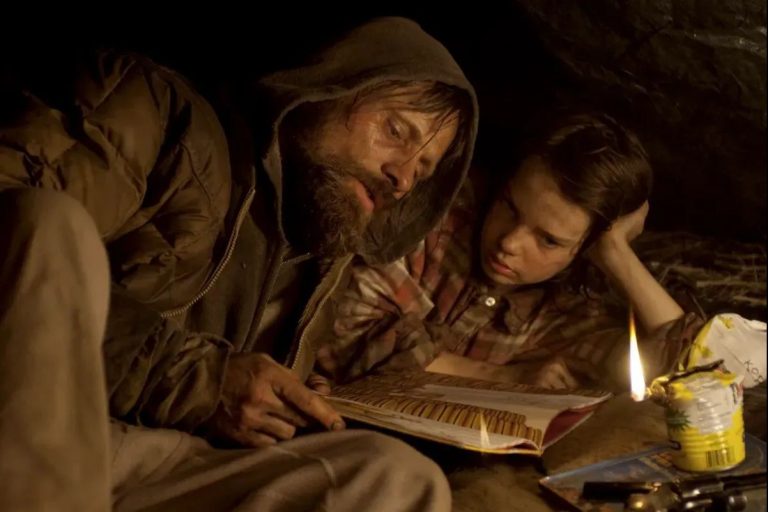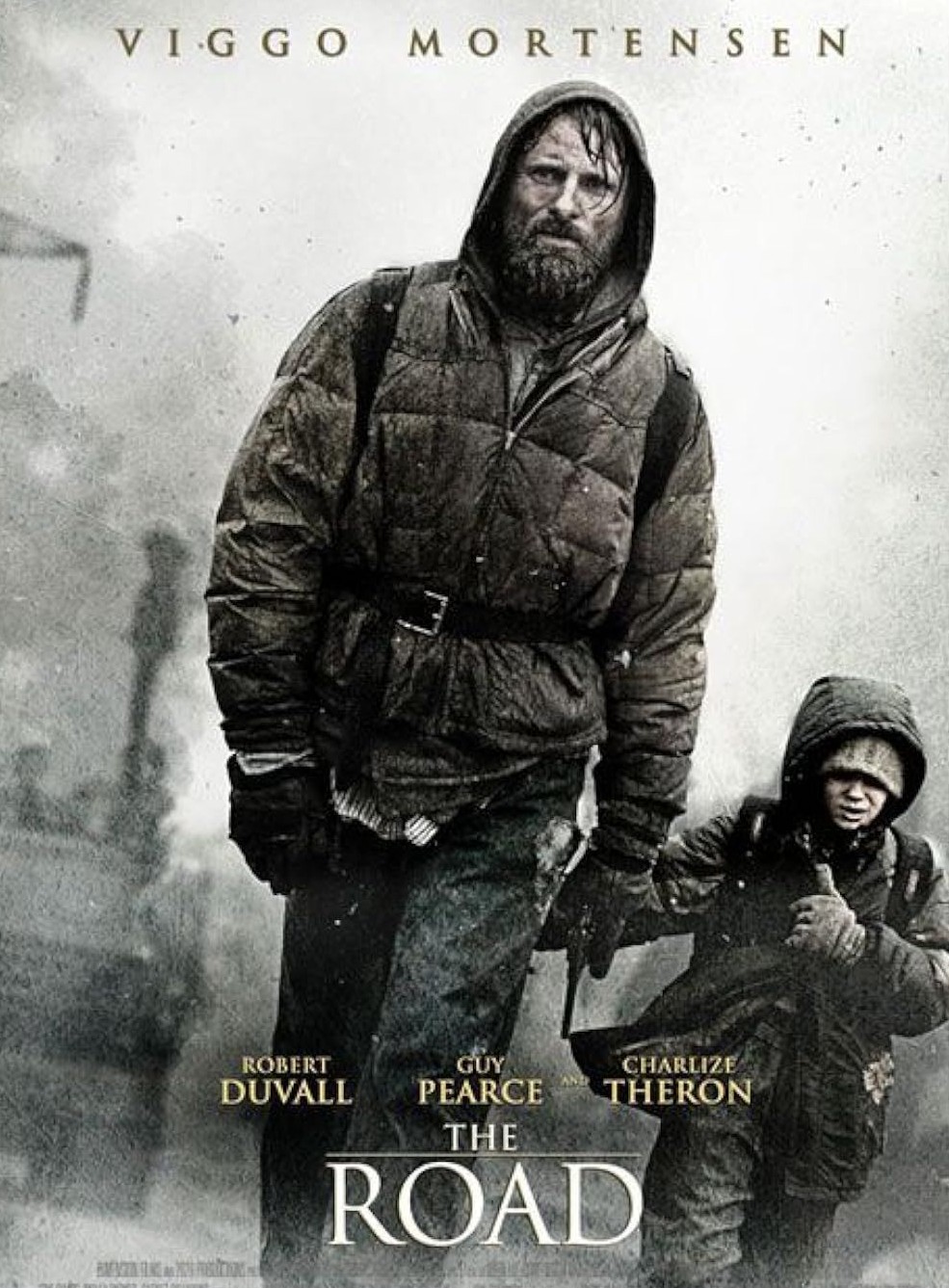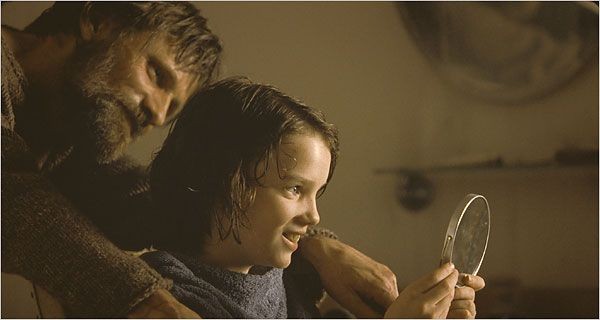
Exploring the Depths of Human Connection in Cormac McCarthy’s ‘The Road’
Cormac McCarthy’s novel, ‘The Road’, conjures a post-apocalyptic wasteland where the remnants of love and life are poignantly crystallized in the bond between the boy and the man, and in the mother’s sacrificial acts, which epitomize love through death.
L.M. Mansour
“Where there is love there is life” Mahatma Gandhi
Commenting in detail on a chosen extract, explore how this view of the relationship between love and life can be challenged or supported by the language, structure and form of Cormac McCarthy’s The Road.
Cormac McCarthy’s novel, ‘The Road’, conjures a post-apocalyptic wasteland where the remnants of love and life are poignantly crystallized in the bond between the boy and the man, and in the mother’s sacrificial acts, which epitomize love through death. The motif of love, symbolized by their commitment to “carry the fire,” acts as islands of coherence amidst the disordered narrative and the chaos of the post-apocalyptic world.
 McCarthy employs simple, monosyllabic sentences such as “I have you,” to contrast with the terrible desolation, suggesting that love has become the essence of life itself. This foundational love language operates without the constraints of punctuation and speech marks, symbolizing its raw, unfiltered nature. The only “danger” to it is the agony that follows the loss of life which renders this language useless, but also signals the death of love in the inability to use words seen when “the boy said nothing” upon his mother’s death. The boy is described as a being of “grace and beauty” with a “provenance in pain… grief and ashes.” Through this imagery, the boy is depicted as a unique “creation” who embodies both the “ashes” of the deceased, including his mother, and the “grief” that only a living heart can feel. He, in a sense, represents the liminality of love as something that can persist past death and within it.
McCarthy employs simple, monosyllabic sentences such as “I have you,” to contrast with the terrible desolation, suggesting that love has become the essence of life itself. This foundational love language operates without the constraints of punctuation and speech marks, symbolizing its raw, unfiltered nature. The only “danger” to it is the agony that follows the loss of life which renders this language useless, but also signals the death of love in the inability to use words seen when “the boy said nothing” upon his mother’s death. The boy is described as a being of “grace and beauty” with a “provenance in pain… grief and ashes.” Through this imagery, the boy is depicted as a unique “creation” who embodies both the “ashes” of the deceased, including his mother, and the “grief” that only a living heart can feel. He, in a sense, represents the liminality of love as something that can persist past death and within it.
This is further exemplified when he “wish [es]” he “was with [his] mom,” which the father interprets as wishing “that you were dead,” portraying the boy as an old soul experiencing existential weariness. This ties him to a similar expression of love through death as his mother. The boy loves the dead and the living equally, as he never had to confront the farewells that come with a love destined to die. Instead, he feels tied to both forms of love: the clear journey of sustaining love on the road and the “obsidian” black void of love felt for his mother. His mother’s refusal to “tell him goodbye” perhaps symbolizes that the death of love never tangibly existed for him, making it something he cannot feel. In his inexperienced world, love and life are intertwined, so if love exists, so does life, even for the dead.
 Conversely, the mother’s suicide is a more blunt expression of the altering powers of love on life, depicting death as the savior of love. She sacrifices herself with a “flake of obsidian” instead of using the gun, perhaps to restore order to the lives of the father and son, ensuring no one is left behind as they have “two bullets” and therefore no longer outnumber the “bullets in the gun”. By choosing to embrace death for her love rather than allowing her life to be taken by force, McCarthy portrays her as fearing the loss of love, opting instead to distance herself from her “ripped… heart” leaving an untainted image of the boy and choosing her own road of “eternal nothingness”; a true antithesis to love.
Conversely, the mother’s suicide is a more blunt expression of the altering powers of love on life, depicting death as the savior of love. She sacrifices herself with a “flake of obsidian” instead of using the gun, perhaps to restore order to the lives of the father and son, ensuring no one is left behind as they have “two bullets” and therefore no longer outnumber the “bullets in the gun”. By choosing to embrace death for her love rather than allowing her life to be taken by force, McCarthy portrays her as fearing the loss of love, opting instead to distance herself from her “ripped… heart” leaving an untainted image of the boy and choosing her own road of “eternal nothingness”; a true antithesis to love.
 We may also view her choice of suicide as an attempt to summon society as alluded to when she claimed that “women dream of danger to those in their care”. The detached tone shows her distance from such normalcy of playing the role of a caregiver tending as a mother does to her husband and child cemented by the fact that she does not “dream at all”. The statement isolates her from women as echoed in the alienating post-apocalyptic world, but also shows her loss of “hope” and inability to return to her motherly role; stoic to “sorrow” and emotion. Alternatively, her suicide is the act which resurrects her to her traditional role by caring for her loved ones through sacrificing herself and prioritizing their own survival and reducing the danger of seeing herself fail in either the death of her husband or the death of her son.
We may also view her choice of suicide as an attempt to summon society as alluded to when she claimed that “women dream of danger to those in their care”. The detached tone shows her distance from such normalcy of playing the role of a caregiver tending as a mother does to her husband and child cemented by the fact that she does not “dream at all”. The statement isolates her from women as echoed in the alienating post-apocalyptic world, but also shows her loss of “hope” and inability to return to her motherly role; stoic to “sorrow” and emotion. Alternatively, her suicide is the act which resurrects her to her traditional role by caring for her loved ones through sacrificing herself and prioritizing their own survival and reducing the danger of seeing herself fail in either the death of her husband or the death of her son.
 The father still views his family as “survivors,” juxtaposing the mother’s nihilistic view that they are “the walking dead in a horror film.” McCarthy has her belittle the situation, paired with the mundane act of smoking the “dried grapevine,” making her seem in complete acceptance of their plight. Alternatively, it may suggest that she clings to past sophistication “like…rare cheroot,” unable to move forward past the luxuries she leaves behind, thus choosing to remain stagnant as everything has become “meaningless” and immortalizing the things she loves through death like a form of cryogenic freezing. Meanwhile the living fail to preserve “the picture” of her “to keep her in their lives” and she becomes herself part of the oral world only known by memories and speech. McArthy’s choice to have this flashback following a series of them before emulates the father’s possible attempt to keep her love alive through him, but this final memory signals the end of their relationship and the last of her love in the novel as the father realizes he must prioritize his role as guardian over her memory. Must prioritize the tangible love of his son to survive.
The father still views his family as “survivors,” juxtaposing the mother’s nihilistic view that they are “the walking dead in a horror film.” McCarthy has her belittle the situation, paired with the mundane act of smoking the “dried grapevine,” making her seem in complete acceptance of their plight. Alternatively, it may suggest that she clings to past sophistication “like…rare cheroot,” unable to move forward past the luxuries she leaves behind, thus choosing to remain stagnant as everything has become “meaningless” and immortalizing the things she loves through death like a form of cryogenic freezing. Meanwhile the living fail to preserve “the picture” of her “to keep her in their lives” and she becomes herself part of the oral world only known by memories and speech. McArthy’s choice to have this flashback following a series of them before emulates the father’s possible attempt to keep her love alive through him, but this final memory signals the end of their relationship and the last of her love in the novel as the father realizes he must prioritize his role as guardian over her memory. Must prioritize the tangible love of his son to survive.
However, she aligns with the belief in the necessity of love for life by personifying “death” as her “lover,” replacing one love with another and existing in a different realm which transcends the living. She refers to herself as a “faithless slut” with a “whorish heart” which chooses a subversive form of love which can give her “what [the man] cannot.” McCarthy prompts us to question whether her ultimate sacrifice was her suicide or her decision to leave behind her living, concretized forms of love rather than the corrupt one she chose to “face”: her son, who is her “heart,” and her husband, to whom she offers this heart, knowing the man “won’t survive for [himself].”
Read: Influence of Literature: How it illuminated the Path of Human Existence
McCarthy’s extended metaphor of the “passable ghost,” which provides the illusion of companionship to “a person who had no one,” depicts love as a fundamental human necessity akin to food or water. The metaphor compels the person to “breathe” the ghost “into being and coax it along with words of love,” intertwining the breath, through which the language of love is articulated, with the essential breath of life itself, necessary for the survival of love within even a “phantom” entity. McCarthy’s imagery evokes the emotions expected of a solitary child fabricating an imaginary friend out of sheer desperation, thereby portraying the adults in the novel as exhibiting a similar child-like desperation for the essence of love. This is further reinforced by the anonymity of the characters, universalizing them as representatives of mankind’s inability to survive in solidarity and as microcosms for humanity’s desperation for its most fundamental need; love.
Published under the International Cooperation Protocol with Middle East Business | Life Magazine Abu Dhabi
______________________